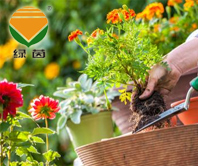
The rose growth regular
Rose likes sunshine, cold resistance, drought tolerance, good drainage, loose and fertile loam or light loam, poor growth in clay loam, poor flowering. Should be planted in a well-ventilated, far away from the wall, in case the sun reflects, burns the bud, affecting the flowering.
Roses are positive plants, when the sun is full, the flowers are strong and the fragrance is also strong. When the holiday light is less than 8 hours in the growing season, it is in vain and does not bloom. The requirements for air humidity are not very strict, the temperature is low, rust and powdery mildew occur when the humidity is high. The flowering season requires the air to have a certain humidity. When dry at high temperature, the oil production rate will be reduced. soil acidity and alkalinity, and it can grow normally from slightly acidic soil to slightly alkaline soil. The areas covered with snow in winter can endure the low temperature from-38 ℃ to-40 ℃, and the areas without snow cover can also tolerate the low temperature from-25 ℃ to-30 ℃, but cannot bear the dry wind in early spring. In areas where the soil has not yet been thawed and the ground is large, the branches tend to be blown by the wind; If the soil has been thawed, the roots are constantly transmitting water and nutrients to the stem, and the wind cannot cause serious harm. Areas with dryness greater than 4 need irrigation conditions to develop normally.
The rose lacks the symptoms of growing elements:
upper part of plant
Boron deficiency: the top bud withered from the base, flowers but not solid, falling flowers and fruit.
Calcium deficiency: the top bud curls in the shape of a hook and gradually dies.
Middle and lower part of plant:
Sulfur deficiency:The leaves lose green.
Fe deficiency: Young leaves and veins lose green.
Potassium deficiency: variegated leaves with necrotic spots.
Phosphorus deficiency: the leaves are dark green and red and purple, and the stems are thin and short.
Nitrogen deficiency: old leaves turn yellow, dry death.
Mn deficiency: young leaves lose green and small necrotic spots.
Copper deficiency: young leaves lose green, growth is poor
Magnesium deficiency: green yellowing of the lower leaves of the leaves.
Zinc deficiency: large necrosis between veins of leaves.
Recommended scheme:
Spraying Lvyin special flower liquid fertilizer
1.gently shake the bottle nutrition solution before use.
2.Take 10 milliliters of this product and dissolve it in 1 liter of water, stir evenly and apply it.
3.The application is to spray the leaf surface first, so that the leaf is just wetting, and then the root is irrigated until the soil around the plant is fully welted.
4.It is recommended that it be applied every 7 to 14 days.






